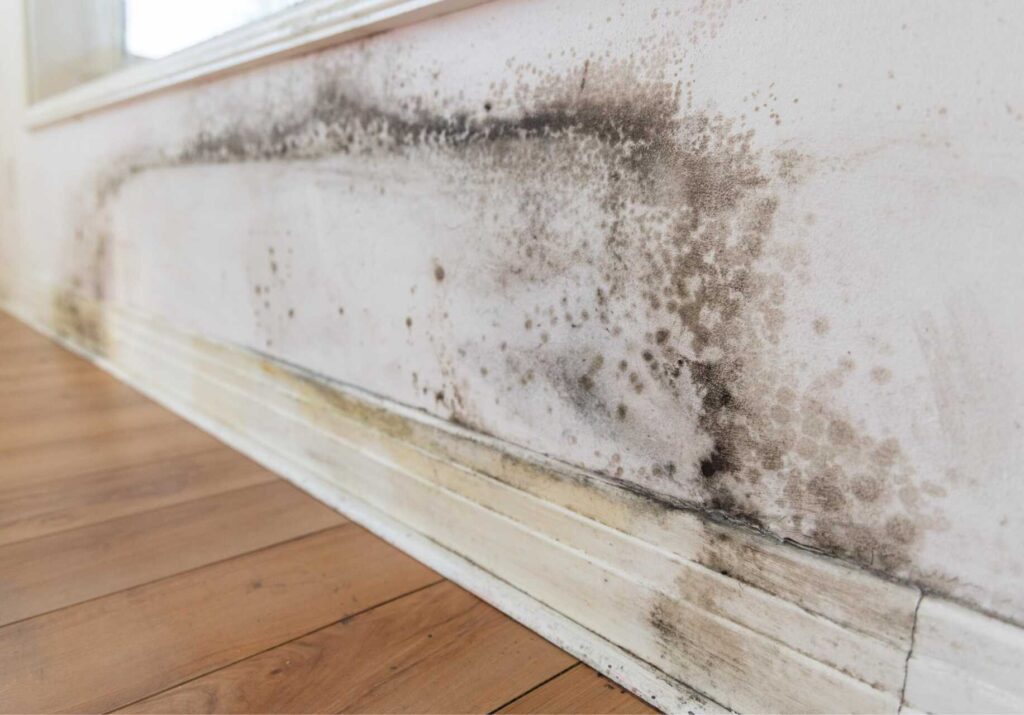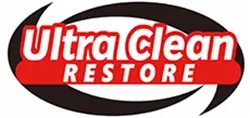
Contents
When water damage occurs, mold can quickly become a serious issue. You might not realize how fast it spreads in damp environments. Expert mold remediation is essential to tackle this problem effectively. Professionals employ advanced techniques to assess and contain mold growth, ensuring safety and thoroughness. Understanding the mold remediation process is crucial, especially if you want to protect your property and health. What steps should you take next to address this urgent concern?
Key Takeaways
- Prompt mold remediation is crucial within 24-48 hours post-water damage to prevent rapid mold growth and health risks.
- Conduct a thorough visual inspection and moisture assessment to identify the extent of water damage and mold presence.
- Hire certified mold remediation professionals with proven experience to ensure effective and safe removal practices.
- Implement containment measures and air filtration systems during remediation to prevent the spread of mold spores.
- Maintain ongoing prevention strategies, such as controlling humidity and repairing leaks, to protect against future mold growth.
Understanding Mold Growth After Water Damage
When water damage occurs, mold can start to grow within 24 to 48 hours, making it essential to address the issue promptly.
Understanding mold biology is vital in recognizing how various environmental factors contribute to its growth. Mold spores are everywhere, and they thrive in damp, warm conditions. Factors like humidity levels, temperature, and available organic material can greatly influence mold proliferation.
To prevent mold, you need to control moisture levels immediately after water damage. Drying out the affected areas and ensuring proper ventilation can help inhibit mold development.
The Importance of Timely Mold Remediation
Addressing mold growth promptly is vital to maintaining a safe living environment. Timely intervention can greatly impact the mold lifecycle, preventing spores from spreading and causing further damage.
When you notice mold, it’s important to act quickly; even a small patch can expand rapidly under the right conditions, leading to health risks and structural issues.
By prioritizing remediation efforts, you protect your home and foster a healthier atmosphere for everyone living there. Delaying action allows mold to thrive, which can complicate the removal process and increase costs.
Additionally, timely remediation helps safeguard your family’s well-being, as exposure to mold can trigger allergies and respiratory problems.
Assessing the Extent of Water Damage
To effectively assess the extent of water damage, you should start with a thorough visual inspection of the affected areas.
Look for signs like discoloration, warping, or visible mold growth.
Complement this with moisture measurement tools to quantify the dampness and identify hidden damage within walls and floors.
Visual Inspection Techniques
Although you might feel overwhelmed after water damage occurs, conducting a thorough visual inspection is crucial for evaluating the extent of the problem.
Using proper inspection tools can help you identify hidden issues and prevent further damage. Here are some key techniques:
Check for discoloration: Look for stains on walls, ceilings, or floors, indicating moisture presence.
Inspect surfaces: Feel for dampness or warping in wood or drywall, which can signal water intrusion.
Examine hidden areas: Look behind furniture and appliances where water might accumulate unnoticed.
Assess airflow: Maintain ventilation in affected rooms, as mold thrives in stagnant, humid conditions.
Moisture Measurement Tools
After completing your visual inspection, the next step involves accurately measuring moisture levels to determine the extent of water damage. Utilizing moisture meters and humidity gauges is essential for this process. These tools provide you with precise readings, allowing you to identify problem areas and assess the need for remediation.
| Tool Type | Purpose | Recommended Use |
|---|---|---|
| Moisture Meter | Measures moisture content | Wood, drywall, and carpet |
| Humidity Gauge | Monitors ambient humidity levels | Indoor air quality assessment |
| Infrared Camera | Detects hidden moisture | Behind walls, ceilings |
| Thermo-Hygrometer | Combines temperature & humidity | Overall environment control |
| Pinless Meter | Non-invasive moisture detection | Delicate surfaces |
Choosing the Right Mold Remediation Professionals
How can you ensure you select the right mold remediation professionals for your needs?
Choosing the right team is essential for effective mold removal and ensuring a safe environment. Here are four key factors to take into account:
Mold Remediation Certifications: Verify that the professionals hold relevant certifications, indicating they’ve undergone proper training in mold removal techniques.
Professional Experience: Look for companies with a proven track record. Experience in handling various mold situations can make a significant difference in effectiveness.
References and Reviews: Seek out testimonials or references from previous clients. This can provide insight into the professionalism and reliability of the team.
Comprehensive Assessments: Confirm they conduct thorough assessments before starting the remediation process. This sets the foundation for tailored solutions to your specific mold problem.
The Mold Remediation Process Explained
Understanding the mold remediation process is vital for effectively addressing mold issues in your home or business. The first step involves a thorough inspection to identify the extent of the mold infestation and its lifecycle stage. This allows remediation professionals to determine the best approach.
Next, they’ll contain the affected area to prevent spores from spreading, using techniques like plastic barriers and negative air pressure.
After containment, they’ll employ specialized remediation techniques, such as HEPA vacuuming and chemical treatments, to remove mold and its source of moisture.
Once remediation is complete, it’s important to dry the area thoroughly to inhibit future growth.
Finally, a post-remediation inspection confirms that the mold has been effectively eliminated. By understanding this process, you can work closely with professionals to restore a healthy environment in your space.
Preventing Future Mold Growth
Once mold remediation is complete, taking proactive steps to prevent future mold growth becomes essential.
By implementing a few key strategies, you can create a healthier environment in your home or workspace.
Use mold-resistant materials: When renovating, opt for drywall, paint, and insulation that resist mold growth.
Ensure proper ventilation: Install exhaust fans in kitchens and bathrooms to reduce humidity. Open windows when possible to improve air circulation.
Monitor humidity levels: Keep indoor humidity below 60% using dehumidifiers or air conditioning.
Regularly inspect areas prone to moisture: Check basements, attics, and around windows for signs of leaks or dampness.
Health Risks Associated With Mold Exposure
Though mold is a common issue in damp environments, its presence can pose significant health risks to individuals exposed to it. For many, mold exposure can trigger mold allergies, leading to symptoms like sneezing, runny noses, and skin irritation.
Those with pre-existing conditions, such as asthma, may find that mold exacerbates their respiratory issues, resulting in increased wheezing and difficulty breathing.
Additionally, prolonged exposure to mold can lead to more severe complications, including chronic respiratory diseases and sinus infections. Vulnerable populations, such as children, the elderly, and individuals with weakened immune systems, are at a heightened risk.
It’s essential to recognize these risks early and take appropriate steps to mitigate mold exposure. By understanding the potential health hazards linked to mold, you can better protect yourself and your loved ones from its adverse effects.
Ensuring Safe and Thorough Cleanup
To ensure safe and thorough cleanup after water damage, you’ll need to implement effective mold assessment techniques to identify the extent of the contamination.
Containment measures are critical to prevent mold spores from spreading during the removal process.
Finally, employing safe removal practices will minimize health risks while effectively addressing the mold issue.
Mold Assessment Techniques
When evaluating mold after water damage, it’s crucial to employ effective techniques that ensure a safe and thorough cleanup.
Here are some key mold assessment techniques you should consider:
Visual Inspection: Check for visible mold growth and moisture-prone areas.
Mold Identification Methods: Use tools like moisture meters to detect hidden mold and moisture sources.
Mold Spore Sampling: Collect air samples to analyze spore counts, helping identify the extent of contamination.
Surface Sampling: Test surfaces for mold presence, providing specific data on types and concentrations.
Containment Measures Implemented
Implementing effective containment measures is essential for ensuring a safe and thorough cleanup after water damage and mold growth. You’ll need to set up containment barriers to isolate affected areas, preventing spores from spreading to other parts of your home. Additionally, utilizing air filtration systems helps capture airborne particles, maintaining air quality during the remediation process.
Here’s a quick overview of key containment measures:
| Containment Measure | Purpose |
|---|---|
| Containment Barriers | Isolate affected areas |
| Air Filtration | Improve air quality and safety |
| Negative Air Pressure | Prevent mold spores from escaping |
Safe Removal Practices
While addressing mold contamination, safe removal practices are essential for ensuring a thorough cleanup.
To effectively execute mold removal, follow these guidelines:
Wear Safety Equipment: Always use gloves, masks, and goggles to protect yourself from spores.
Seal Affected Areas: Ascertain all contaminated spaces are contained to prevent spore spread during removal.
Use Proper Removal Techniques: Employ HEPA vacuums and damp wiping methods instead of dry brushing, which can release spores.
Dispose of Contaminated Materials: Safely bag and label any materials that are heavily infested, ensuring they’re removed from the premises immediately.
Review
In the aftermath of water damage, addressing mold promptly is as vital as extinguishing a fire before it spreads. By engaging expert mold remediation professionals, you ensure a thorough assessment and effective removal process, safeguarding your health and property. Remember, prevention is equally important; by controlling moisture and implementing appropriate measures, you can keep mold at bay. Prioritize your safety and well-being, and take proactive steps to maintain a mold-free environment for yourself and those around you.
Recent Posts
Why Choose Professional Mold Remediation Services?
Regarding mold issues, relying on professional mold remediation services can make a significant difference. Mold
7 Steps for Professional Mold Remediation
When it comes to mold remediation, understanding the process is essential for effective results. You’ll
Cost-Effective Sewage Cleanup and Repair Guide
When faced with sewage damage, you need a structured approach to minimize costs and health
